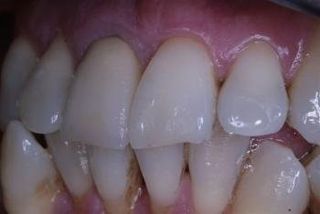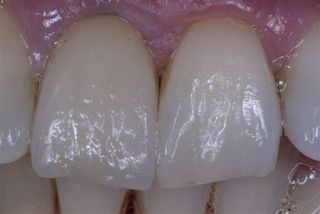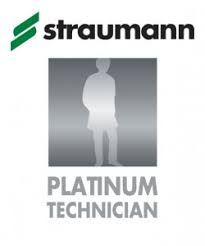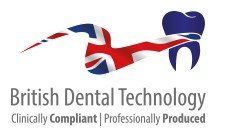sbo dental laboratory
Crown and Bridge
Crown & Bridge
Crown and bridge cases remain the mainstay of any dental laboratory. For us these cases are complex and have attachments linking crowns to dentures. The best person to contact for denture cases is Keith Shrubb who has many years of experience in this area.
How you can help us:
On the work ticket you will notice that there is a field for restoration shade and prep shade. It is important that you fill both of these in where possible as it can help us to choose the correct material for the case. In addition, if you take pictures, please include a shade tab in the image as it helps us gauge the colours. Not all monitors are created equal!
Prices:
All our conventional crown and bridge restorations are the same price to make it easy for you to cost. It also means that cost has no influence on the type of restoration - we can use the most suitable material for the case.
Guarantee:
We give a 5yr guarantee on all our conventional restorations except where we identify contra-indications.
Types of Restoration
Zirconia
Layered
Medium/Low translucency
950-1400Mpa (core)
When to use
When high strength is needed or when the underlying dentine is dark and needs blocking out.
Contra Indications
When the bite is very close, <0.3mm or when there is extremely limit space for bridge connectors. It is also not recommended to to use a Ti-Base on a cantilever bridge.
Bonding Technique
Conventional Cementation.
Eg Zinc Phosphate, glass ionomer.
Polycarboloxylate is not recommended due to expansion
Emax
Medium/High translucency
400MPa
When to use
The translucence provides a natural result. Full crowns or partial coverage crowns when maximum strength is required and dentine bonding is possible.
Contra Indications
Very dark teeth or post and cores cannot be masked. Not recommended when minimum thickness is less than 1mm.
Bonding Technique
Dentine bonded is recommended. Cementation results in a weaker restoration.
Zirconia
Monolithic
Medium/Low tranlucency
750-1250Mpa
When to use
When maximum strength is needed or when the underlying dentine is dark and needs blocking out.
Contra Indications
Highly Aesthetic situations. In our opinion, layered zirconia always looks more natural and translucent and subtleties cannot be built into monolithic structures.
Bonding Technique
Conventional Cementation.
Eg Zinc Phosphate, glass ionomer.
Polycarboloxylate is not recommended due to expansion
PFM
(Metal Bonded)
Zero Translucency
circa 900Mpa
When to use
PFM is particularly suited for implant retained cantilever bridges. With a zircon Ti-base, rotational forces on the cantilever can break the bond between the framework and the ti-base.
Contra Indications
Aesthetic situations. In our opinion, layered zirconia always looks more natural and metal frameworks can lend a greyness to the restoration.
Bonding Technique
Conventional Cementation.
Eg Zinc Phosphate, glass ionomer.
A porcelain fused to metal crown example:

The dentist's photograph of the Post and Core before

The original porcelain fused to metal crown made by another dental lab showing a dark margin, bright colour, poor surface texture and incorrect symmetry
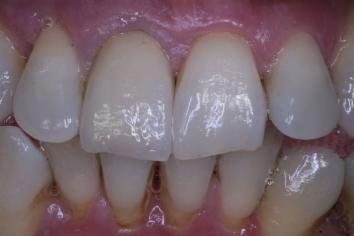
A close up of the SBO Dental Laboratory crown at try-in
Note how the surface texture of this porcelain fused to metal crown reflects the light similar to the natural tooth on the right.
